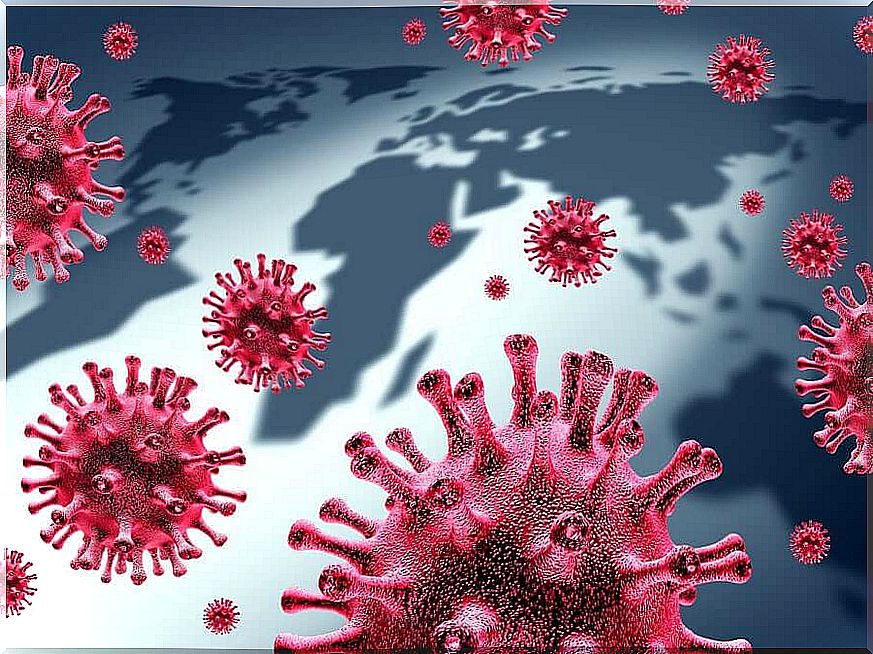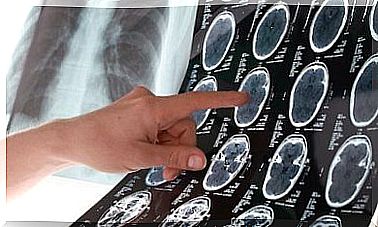How Do Viruses Mutate?
With the spread of the coronavirus around the world, the question of how viruses evolve has arisen again. The mutation of the genome is the explanation of this phenomenon and we tell you about it in this article.

The question of how viruses evolve is present in the general population whenever there is an epidemic. Today, with the spread of the coronavirus in its COVID-19 variant, the question arises again.
In fact, science already has a fairly well formulated explanation for the phenomenon. The knowledge of genetics, and the scientific studies which are carried out each time there are epidemics, have made it possible to advance in the knowledge of the virological mechanism of the mutation.
We know that viruses have genetic information within them which they use to persist and multiply. Just like human DNA, the viral genome encodes how the virus exists. This includes how to infect and even what species will be targeted for infection.
Viruses have two ways of mutating:
- By recombination : this occurs when two or more viruses exchange portions of DNA or RNA with each other, modifying one with the structure of the other
- By random mutation : here, the change is intrinsic to a virus, and generally occurs through an error in the replication of genetic material
The larger the infected population, the more likely it is for a virus to mutate. However, it is not correct to associate the issue of virus evolution with lethality. Most of them, as we will see in this article, migrate in light forms to survive. If they became more deadly, they would lose their hosts.
Why do viruses mutate?
The answer to the question of why viruses change is simple. It is a mistake. Most of the time, the viral mutation is the result of an error in the coding of the RNA. While there are viruses that contain DNA rather than RNA, it is within seconds that the error is amplified.
This is because viruses with DNA have a more finely tuned mechanism for reproducing their genetic information, so they make fewer mistakes when copying genes to replicate. In RNA viruses, the control mechanism is more rudimentary.
DNA viruses use enzymes called polymerases which are found in the cells they infect. We have to imagine it as a parasite that takes advantage of the resources of the receiver. DNA polymerases have the ability to fix mistakes.
It’s different with RNA viruses, where DNA polymerases aren’t able to correct. This causes mutations, and frequently. A virus whose genetic information consists of RNA mutates at a remarkable rate.
Now, if we are to answer the question of why viruses change, we should say that they do so to survive. As with the evolution of species in general, where favorable changes are exploited to last, in the viral domain, it happens in the same way. However, change does not always mean greater virulence.

Is a virus mutation always bad?
No. It is not always true that the mutation of a virus results in an increase in lethality, that is, in the ability to kill. If we think about it, that would be an evolutionary error. The virus cannot kill too many hosts because it would run out of room to survive.
Viruses change by adapting to the circumstances offered by their host species at any given time. If they manage to become less fatal, they can go unnoticed, reproducing from individual to individual. In short, that would be a logical goal for the viral infection: to perpetuate itself.
As the virus changes, the immune response capacity of the host species also changes. This leads to a strange equilibrium where the viral population extends into coexistence with the hosts. This is the case with human influenza, which causes seasonal epidemics every year.
What have we discovered about the coronavirus and its mutation?
Peking University has led a scientific effort to encode COVID-19 strains. So far, they have identified two varieties of coronavirus that carry the letters L and S, respectively.
The L strain is the one that began its human journey in Wuhan, China. It is the one that first mutated, becoming infectious for the human species, when it was transmitted between animals. The other strain, S, is the one that can be found in humans infected since February.
The L strain decreased in its presence from January of this year, and it is suspected that this is due to human actions. Measures taken to limit the expansion and imposed quarantines have favored a slide towards the S strain, which is proving to be a milder and less virulent version of COVID-19.

Viruses don’t always mutate for the worse
Knowing how viruses evolve gives us a clue about the evolution of epidemics. In most cases, a state of maximum transmission is reached, and then the cases decrease. One of the factors in this evolution is human intervention, but another no less negligible factor is viral mutation.
However, mutations in viruses prompt us as humans to change our habits as well and try to adopt healthier measures. Prevention is the key to our fight against viral mutations.









